8. Mala Noche (1985)
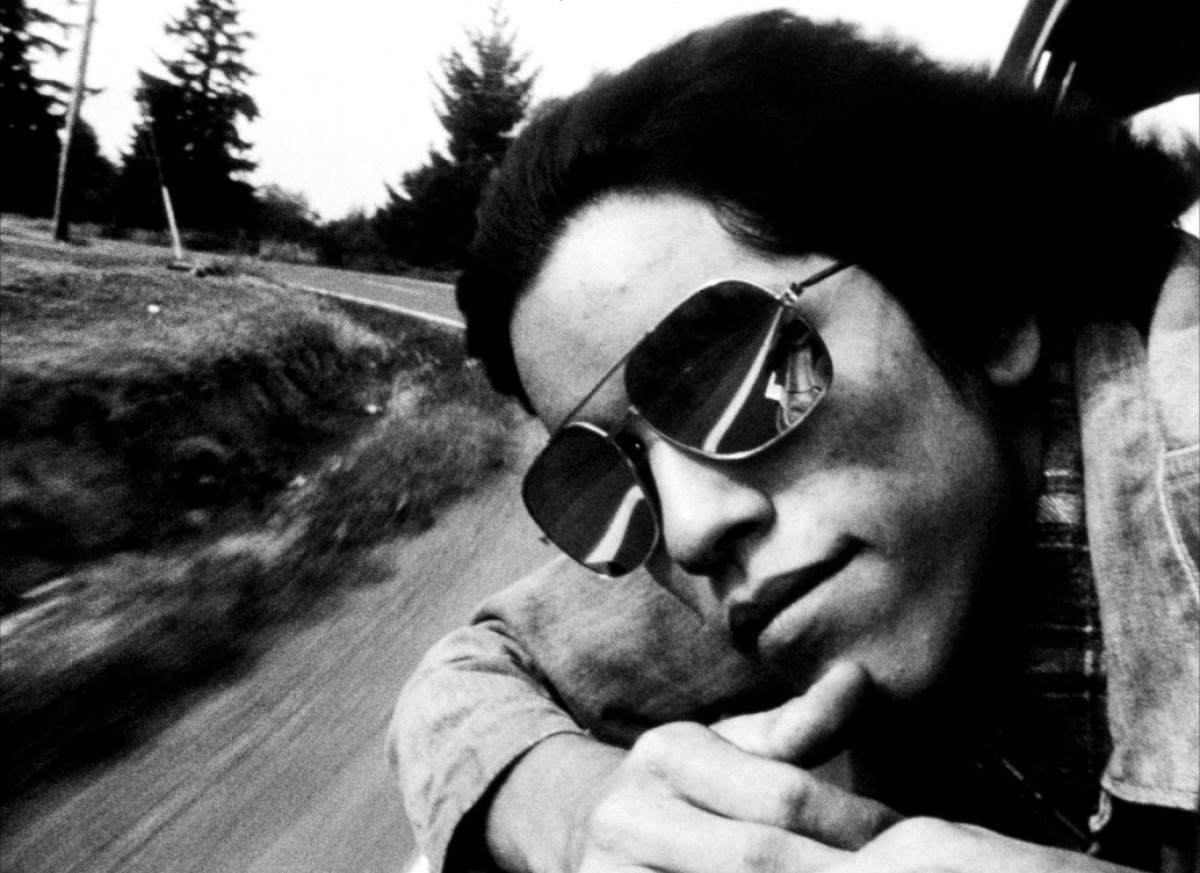
Gus Van Sant began his feature filmmaking career as a pioneering–and even transgressive–filmmaker, and his first feature was a promising glimpse of what was soon to follow. Mala Noche is about the relationship between Walt, a gay store clerk, and two younger Mexican boys, Johnny and Roberto. Walt attempts to sleep with Johnny, and then successfully seduces Roberto, all while spending much of the film continuing to pursue Johnny. Meanwhile, an ambiguous romantic triangle forms between the three
A radical film for its time, with a gay protagonist that seduces underage boys, Van Sant uses his meditative style to address issues of race and sex, money, age, and language barriers. Hailed as a modern classic in some circles, particularly held in high regard as an example of New Queer Cinema, and with a Criterion release, Mala Noche was a bold first film by a filmmaker that would go on to make some of the more daring films of the past 30 years.
7. Last Days (2005)
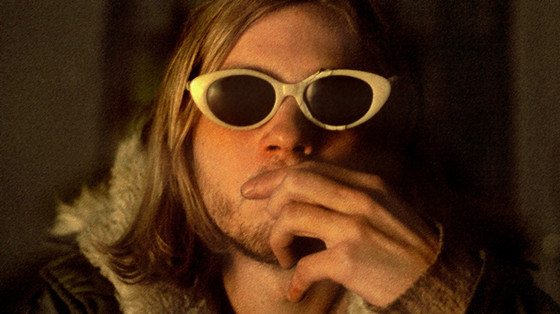
Musician Kurt Cobain was one of the most compelling figures of the 1990s: with his band Nirvana quickly becoming one of the most popular music acts in the world in 1991, Cobain helped usher in the grunge era and became its most visible star. But he publicly battled depression and drug addiction, suddenly ending his life in 1994 by suicide at the age of 27, having completed three studio albums, a live acoustic set for MTV’s Unplugged, and a compilation album of B-sides.
His death attracted just as much attention as his life’s work, and in 2005 Gus Van Sant wrote and directed Last Days, a speculative film about the last few days of Cobain’s life (although in the film, the Cobain-like figure played by Michael Pitt is named Blake). A quiet, meditative film, it’s the second part of Van Sant’s “Death Trilogy” and a study of mental isolation and depression.
Like Cobain, the stumbling, mumbling Blake spends his last few days hiding out in his mansion after running away from rehab, avoiding concerned calls from business partners and family, and doing drugs. It’s a spectacular film on many levels, from Pitt’s riveting performance to Van Sant’s carefully controlled abstract composition of images to slight-of-hand non-chronological editing that reflects the scattered psyche of its central protagonist.
6. My Own Private Idaho (1991)

Henry IV, Parts I and II and Henry V are perhaps Shakespeare’s finest histories. Having been successfully adapted in one of Orson Welles’ finest films, Chimes at Midnight, Van Sant adapted the play to include gay hustlers, a narcoleptic as the audience’s window character, and arthouse film flourishes.
The result is an incredibly forward-thinking film that mixes the old with the new and creating something unique in the process. River Phoenix plays the narcoleptic hustler Mike, who seems to wander through life like it’s a dream–appropriate enough, since he often fades from consciousness. Keanu Reeves even puts in a compelling performance as Scott, the film’s stand-in for Prince Henry. But front and center is Gus Van Sant’s inimitable style as the camera drifts along like a dream Mike’s having, mixing Shakespeare’s original story with his own bohemian sensibilities and vision.
5. Drugstore Cowboy (1989)
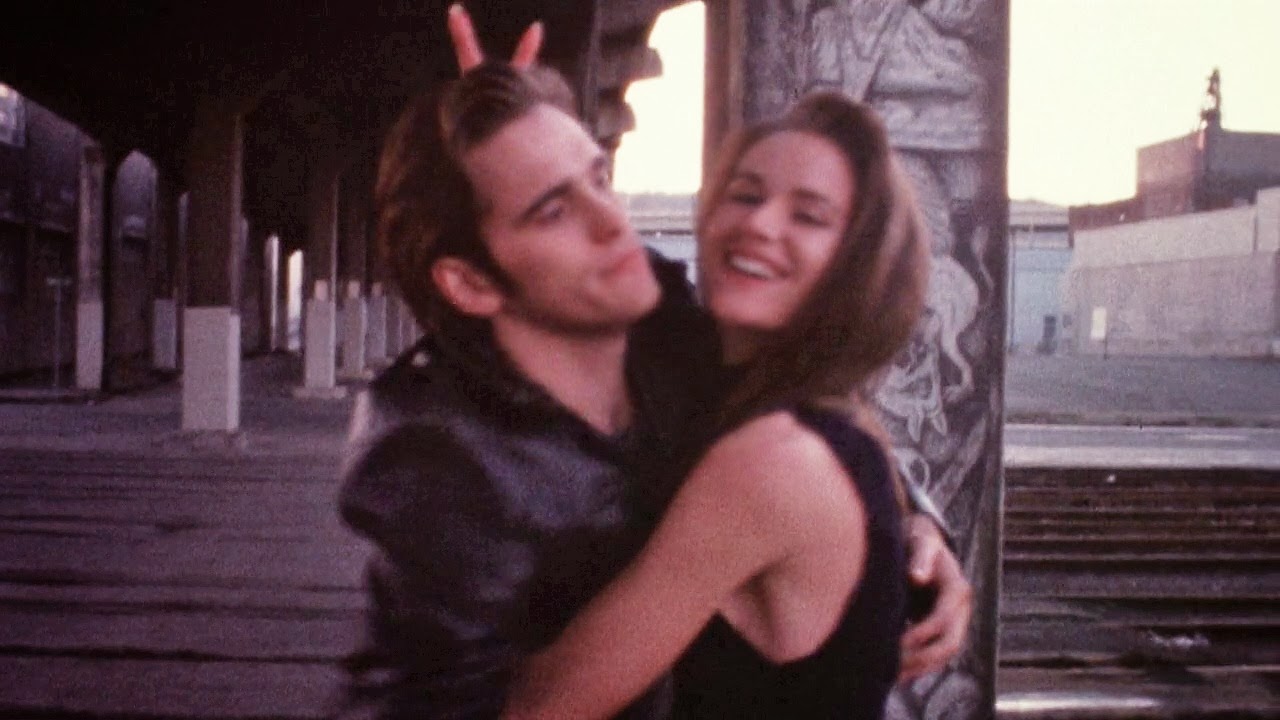
For a while, Gus Van Sant was pigeonholed as an artsy director whose films were about homosexuals, junkies, and street hustlers–which is somewhat fair, considering his first three films were about, well, those three things.
And Drugstore Cowboy–his second feature film–follows the aimless and increasingly harrowing lives of a crew of drug addicts in the early 70’s as they live transient lives, taking drugs and robbing hospitals and pharmacies to support their habits. Starring Matt Dillon and Kelly Lynch as a married couple in the crew, with Dillon’s character deciding to get clean after one of their friends overdoses and dies, he instead finds that getting sober isn’t the hardest part of escaping the life he lived.
Critically acclaimed–to the point where it holds a rare 100% rating on Rotten Tomatoes–this was Van Sant’s larger entry into the film world. A haunting, excellent film about the dangers of drug use and lasting effects on one’s life after living as an outlaw, Drugstore Cowboy is the Van Sant film to start with–where his signature style and recurring themes of depicting characters that live outside the mainstream are depicted with humanity.
4. To Die For (1995)
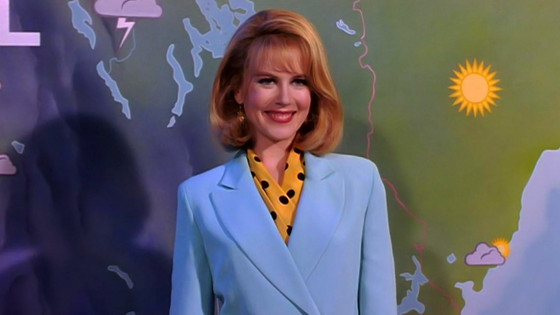
Ambition is a hell of a desire. While it may help some claw their way out of poverty and others to obtain success through hard work, ambition is also a trait that can drive people to awful ends. Such is the case with Suzanne Stone (Nicole Kidman), a meteorologist at a local news station who desires to be world famous.
Marrying a man (Matt Dillon) who she thinks his family’s successful business will keep her comfortable, instead she’s perturbed when he asks her to take time off from work to start a family. Instead, she befriends a group of high school students (including Joaquin Phoenix) and manipulates them to murder her husband. When the story of the murder and Suzanne’s illicit affair with the students breaks, she becomes a media sensation, much to her delight. But her late husband’s family seeks revenge for his death.
One of Van Sant’s mainstream entries in his oeuvre, To Die For is a biting black comedy that features a captivating performance from Kidman as a sociopath. Van Sant’s typical focus and control over the film’s tone and style gives the film a hypnotic pace and gaze as he lingers on his subjects, particularly Kidman’s camera-hungry character. An underrated masterpiece, it’s perhaps the only straightforward comedy in Van Sant’s filmography and one of his best.
3. Milk (2008)
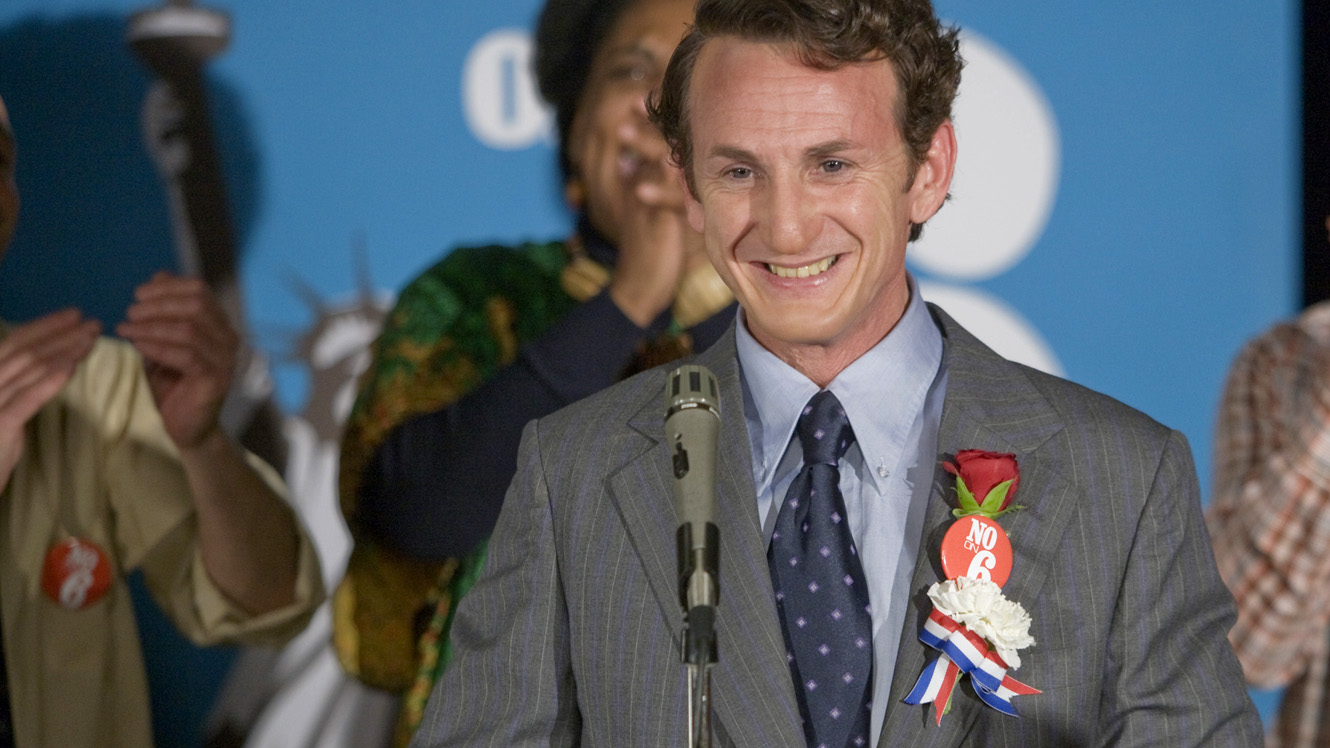
Harvey Milk has been a highly influential figure in the gay rights movement in the United States. The first openly gay person to be elected to public office in California, Milk was an out and proud member of the LGBTQ community at a time when being so was dangerous–as he would find out when he, along with the mayor of San Francisco, was assassinated by political rival Dan White.
Gus Van Sant–an openly gay man whose work is closely associated with the New Queer Cinema movement–was the perfect choice to film a biopic on Harvey Milk’s life and career. Treating the subject with a sort of verve and passion the filmmaker rarely displays in his trademark style, Milk (played masterfully by Sean Penn) is shown to be a charismatic figure whose own passion and commitment to defend and fight for the rights of gay people in the face of society at large’s disapproval, and it’s an important story to tell. Van Sant must have found the story one close to his heart, as the energy and enthusiasm this normally laid-back director infuses the film with clearly demonstrates.
2. Good Will Hunting (1997)
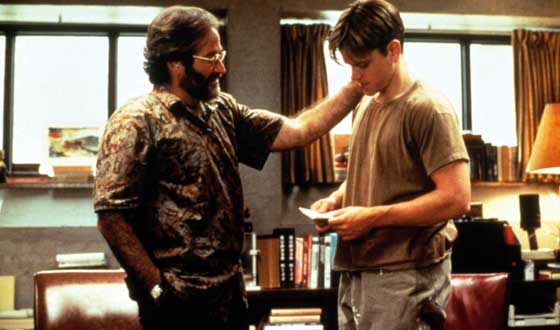
Gus Van Sant is a brilliant director that has always followed his own muse, for good or ill. Visually, he is nearly unmatchable in framing shots, pacing, and the overall coherent visual grammar he displays in his films. Story-wise, however, he has obviously occasionally faltered. But when matched with a first-rate script and characters worth investing his focus, Van Sant can make indispensible, brilliant films.
And with Good Will Hunting, Van Sant found such a marriage. Based on a script by Matt Damon and Ben Affleck, Damon stars as Will Hunting, a janitor at MIT from South Boston who is a mathematical genius–a gift he hides from his friends and the world at large. When a professor finds that he has solved a seemingly impossible equation, and after getting into a bar fight, he is court ordered to therapy and remanded to assist the professor with his work.
The heart of the film, however, comes from Will’s therapy sessions with Dr. Sean Maguire (Robin Williams), who begins to break through the walls Will had built up around him due to abuse at the hands of his foster father. Meanwhile, Will also begins a relationship with Skylar (Minnie Driver), a student at MIT whom he fears will never accept him for his past and their class differences.
Good Will Hunting is a beautiful film that captures a difficult emotional tone and sustains it throughout. In Van Sant’s hands, what could have been an overwrought drama is instead a moving and lyrical look at a genius in hiding and how the emotional scars people carry can affect them for the rest of their lives.
A gigantic critical and commercial hit, it was nominated for nine Academy Awards and won Best Original Screenplay for Affleck and Damon and Best Supporting Actor for Robin Williams. With a haunting soundtrack by the late Elliott Smith, a stellar script, great performances from everyone involved, and of course incredible direction, Good Will Hunting is a modern masterpiece.
1. Elephant (2003)

Gus Van Sant has created his own visual style that’s almost instantly recognizable and has become highly influential in filmmaking in general. He’s also a very American director whose work is exclusively set in America and approaches topics in American culture. His fondness for long, unbroken shots, drifting, dreamlike cinematography, and elliptical storytelling–which jumps back and forth in time and from different perspectives–are perhaps his greatest strength as a storyteller, constantly revisiting important moments and trying to find more meaning, just as America’s own history is revised again and again upon each revisit.
When Van Sant turns his gaze to moments in American history, he seems fascinated by hoping to find meaning with this technique: Kurt Cobain’s suicide in Last Days and Harvey Milk’s assassination in Milk are both films that jump forward and backward in time and depict events from various perspectives as a way to reveal something new with each reconstruction of events.
Elephant is maybe the most “Vant Sant” of his films: telling the story of the 1999 Columbine High School Massacre (replaced with the fictional Watts High School), Van Sant finishes his “Death Trilogy” with this highly controversial film. Instead of imbuing its characters with the sort of anger and rage that would lead up to such a horrifying event, instead Van Sant makes them dispassionate, as if they’re simply doing something on automatic like washing their hair or saying good morning to each other.
Jumping from character to character to view the day’s events from different perspectives–including the shooters–that culminates in a shooting spree in the high school, Van Sant’s visual style is clearly front and center in the film: long, meditative tracking shots, sparse dialogue, and populated by non-actors, Elephant depicts a disturbing moment in American history by making it both a work of art and one whose motives are too obscure to pinpoint–by either the author, the witnesses to the event, or even the participants themselves. In the end, Elephant is the elephant in the room that nobody wants to talk about or, as Van Sant suggests, can even begin to understand.
Van Sant unnerves the audience by marrying calm meditative long shots with upsetting subject matter and Elephant is a modern masterpiece from one of America’s most unique directors. For a director whose previous work had depicted the lives of drug addicts and male prostitutes, Elephant hit a nerve with audiences in America, who found the subject matter hitting far too close from home and depicting a tragedy in perhaps too artful a light.
But for Van Sant, who had started his career as a transgressive director, Elephant is also the culmination of his career that has often teetered on the edge–and to create a film like Elephant, Van Sant proved that he can skate that edge without falling off and make a brilliant film in the process.
Author Bio: Mike Gray is a writer and academic whose work has appeared on numerous websites and maintains a TV and film blog at mikegraymikegray.wordpress.com.